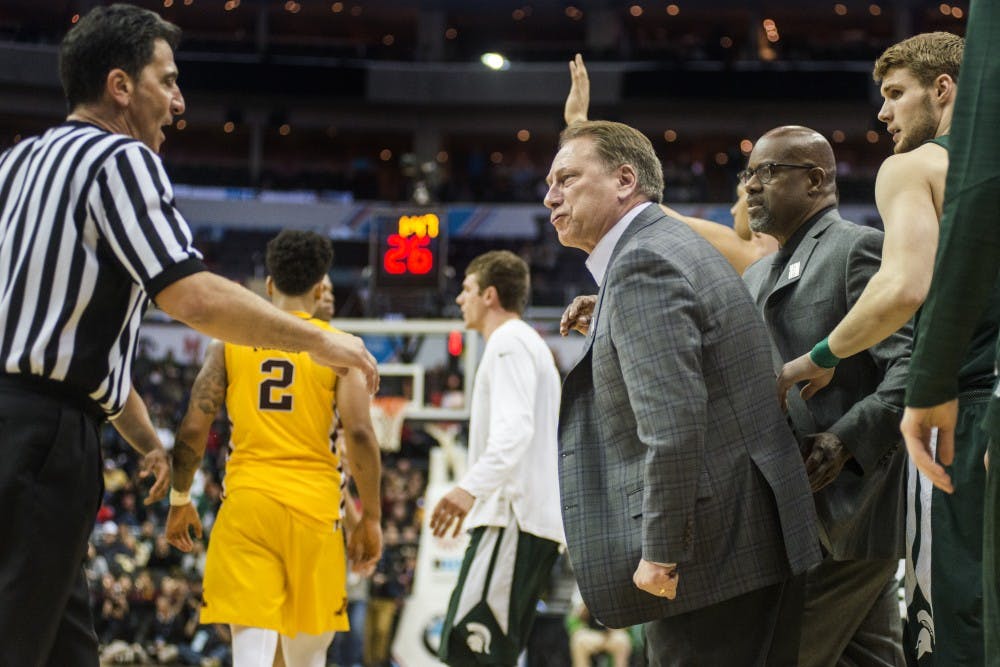Upsets, dark horse teams and possible Cinderella teams are a main subject of March Madness every year, from fans who have been watching every game since Nov. 11 to people who enjoy filling out a bracket and trying to make a quick buck.
Whether it’s through careful and thorough research on players from each team and weighing all the factors that go into a matchup or picking the university with the coolest name or uniforms, some say they enjoy looking for upsets while filling out brackets.
“It’s something to do,” human biology sophomore Neil Hinkson said. “It’s a social kind of thing.”
Some of these upset picks never come to fruition.
Others are neither predicted nor expected, such as VCU’s Final Four run in 2011 as an 11th seed, Butler’s back-to-back championship appearances in 2010 as a fifth seed and 2011 as an eighth seed, to NC State’s legendary run as a sixth seed in 1983 that resulted in its second national championship.
These are three teams that have been seeded fifth or higher since 1979 and made the Final Four, with only NC State in 1983, Villanova in 1985, Kansas in 1988 and UConn in 2014 — who beat MSU in the Elite Eight that year — winning the championship.
“Obviously you always kind of root for them, especially if they’re playing a really big program you might not like,” elementary education sophomore Sam Shoberg said. “Sometimes you do root for the underdogs, but you know it’s happened to us when we’ve been knocked out by the underdog.”
To get far in the Big Dance, these higher-seeded teams have to advance while going against some of the college basketball superpowers, the lower-seeded teams.
Factors that go into Cinderella runs include seeding and how the team plays toward the end of the season.
“If they’re a 10 seed but they won their past six (or) seven games, I’ll pick them,” business-preference freshman Eric Burley said. “They usually have a change of lineup or do something better and I see the potential in them.”
Take MSU in 2015 for example, when the Spartans were a seventh seed after losing to Wisconsin in overtime in the Big Ten championship game and after not being in the AP Top 25 from Dec. 22, 2014 onward.
Their path to the Final Four in 2015 could be seen as a more favorable path because of the teams they played, such as the No. 2-seeded University of Virginia, which that year had one of the best defenses in the nation, but had the eighth worst offense in terms of points scored among March Madness teams.
In the Sweet Sixteen the Spartans played the Oklahoma Sooners, which had then-junior guard Buddy Hield as their only threat.
After a Sweet Sixteen win against the Sooners, MSU’s opponents in the Elite Eight and Final Four — Louisville and Duke — really challenged its Cinderella run.
And when a team is challenged like MSU was in 2015, veteran leadership is a key factor in advancing round to round for Cinderella teams in March Madness.
This can be seen in other Cinderella runs also, like George Mason’s Final Four run in 2006 where seniors Lamar Butler, Tony Skinn and Jai Lewis accounted for just more than 50 percent of the Patriots’ points.
This type of veteran leadership can be considered crucial in trying to make run in the tournament, as most Cinderella teams are mid-majors who don’t have star freshmen like Miles Bridges or Nick Ward who can take over a game.
Even with veteran leadership, not everything relies on how the veterans perform.
A little bit of luck is also required, such as the Sweet Sixteen matchup between VCU and Florida State when the Seminoles decided to pass up a layup to try and get a better shot in the last seconds of overtime and ultimately lost to the Rams.
To some more publicized universities such as MSU, being a higher seed might not bring a positive Final Four run hope that most Spartan fans are accustomed to.
Support student media!
Please consider donating to The State News and help fund the future of journalism.
Others, like VCU in 2011, were likely just happy to make the tournament and weren’t expected to make it out of the First Four.
Discussion
Share and discuss “Through veteran leadership and bracket placement, how higher seeds prevail against the odds” on social media.







